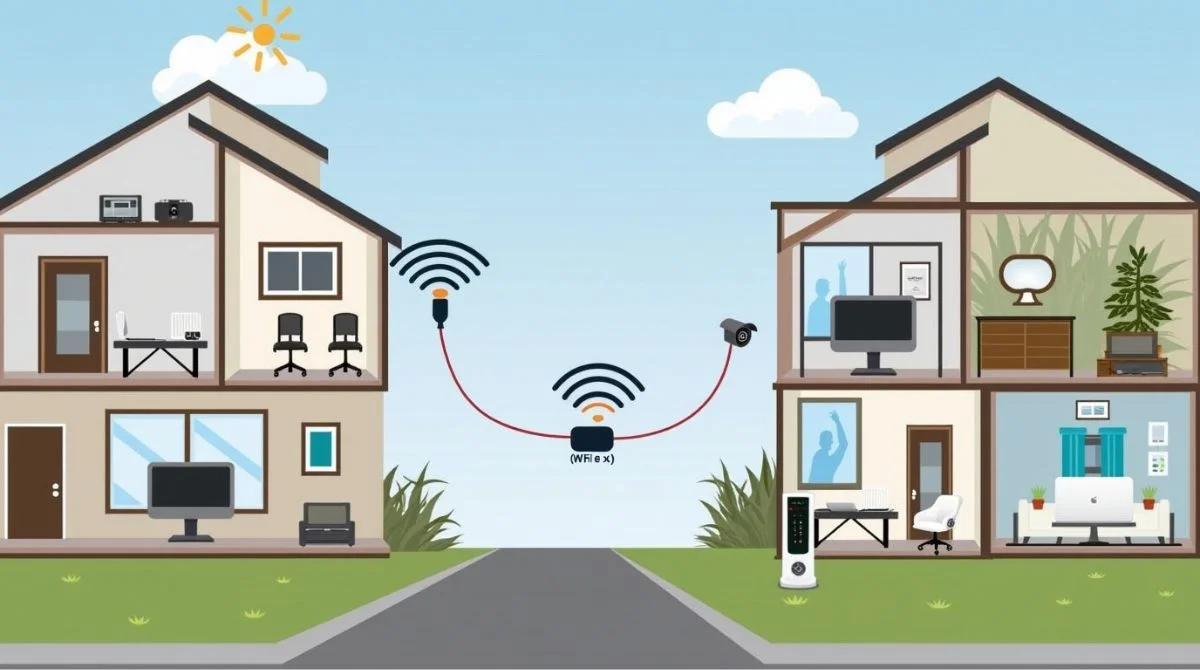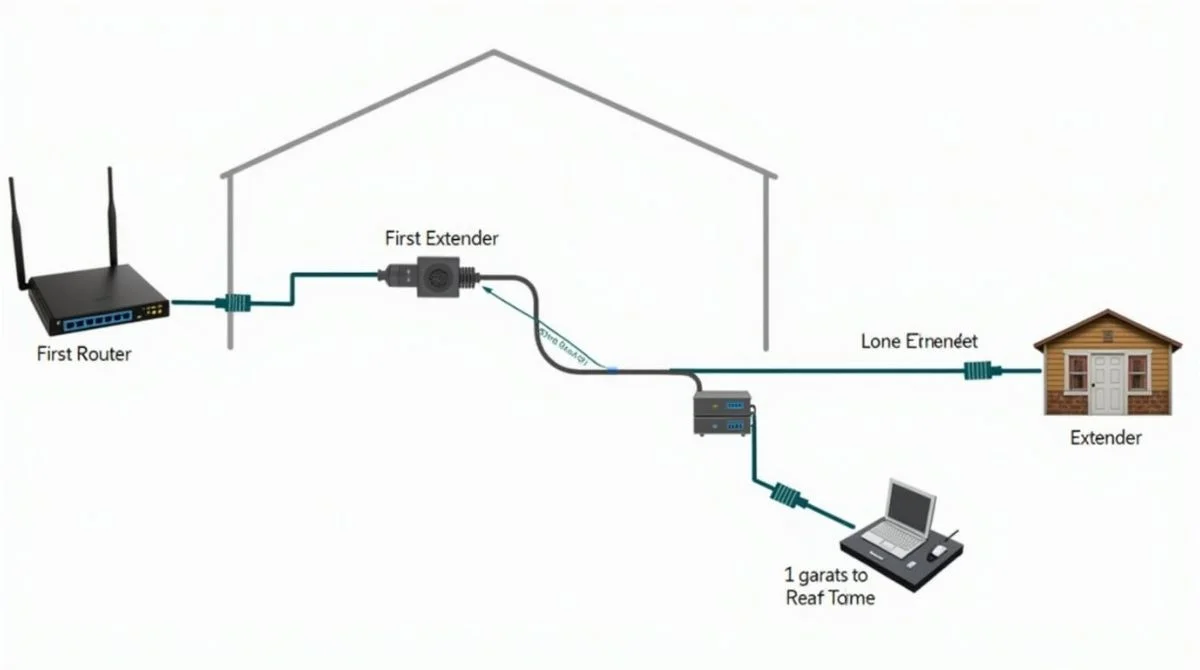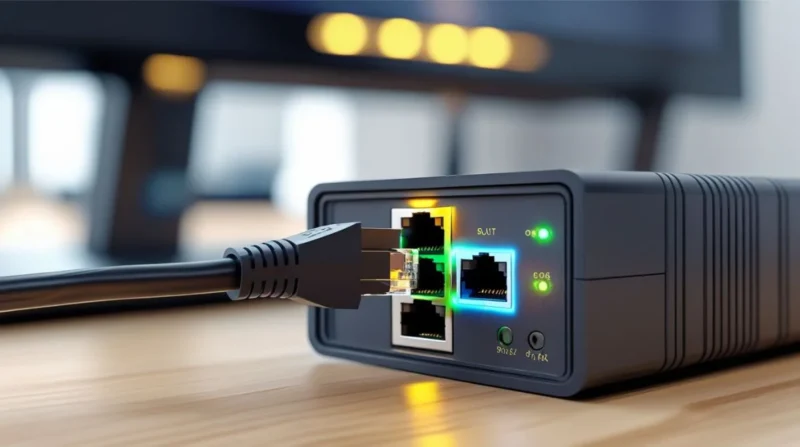Table of Contents
- What Is an Ethernet Network Cable Extender?
- Why Do You Need an Ethernet Network Cable Extender?
- How Ethernet Cable Extenders Work?
- Types of Ethernet Network Cable Extenders
- Benefits of Using Ethernet Network Cable Extenders
- How to Set Up an Ethernet Network Cable Extender?
- Things to Consider When Buying an Ethernet Extender
- Common Uses for Ethernet Cable Extenders
- Conclusion
If you’ve ever tried to set up a wired internet connection across a large building, office, or home, you probably ran into a common problem: the distance limit of Ethernet cables. Standard Ethernet cables, like Cat5e or Cat6, can only stretch up to 100 meters (about 328 feet) before the signal weakens. So, what happens when you need to extend your network beyond that? That’s where an Ethernet network cable extender comes to the rescue.
In this article, you’ll learn how Ethernet cable extenders work, why they are useful, the different types available, and how they can easily boost your LAN (Local Area Network) for better connectivity and performance.
What Is an Ethernet Network Cable Extender?
An Ethernet network cable extender is a simple device that helps your wired network exceed its standard distance limit. It amplifies or converts the signal to travel longer distances without losing speed or quality. This means you can connect devices like computers, security cameras, printers, or switches far from your router or main network equipment.
It works by taking the signal from your existing Ethernet cable, boosting it, and sending it through longer cables or alternative wiring like coaxial cables or telephone lines. On the other end, another device receives the signal, converts it back to standard Ethernet, and passes it along to your devices.
Think of it like adding an extra relay station for your internet signal to travel farther without slowing down.
Why Do You Need an Ethernet Network Cable Extender?
Many people assume Wi-Fi is the only solution for extending network reach, but wired connections are often more reliable, stable, and secure. Here are some reasons you might need a network cable extender:
- Large Homes or Offices: If your building is bigger than the standard cable length allows, extenders help connect every corner.
- Outdoor Installations: Connecting outdoor cameras, security systems, or garden offices often requires extending Ethernet beyond normal limits.
- Industrial or Commercial Settings: Warehouses, factories, or campuses often need wired networks over long distances where Wi-Fi isn’t practical.
- Better Performance: Wired connections are less likely to suffer from interference, making them ideal for streaming, gaming, or sensitive equipment.
In short, extenders help bridge the gap between network devices across larger spaces.

How Ethernet Cable Extenders Work?
Ethernet extenders work in pairs. You install one unit near your network source, like a router or switch, and another near the remote device you want to connect. The extender converts and boosts the signal, sending it over long cables or even over existing telephone lines or coaxial cables.
Different types of extenders use different technologies to achieve this:
- Ethernet over Twisted Pair (UTP): Boosts the signal over regular Ethernet cables for distances beyond 100 meters.
- Ethernet over Coax (EoC): Sends the Ethernet signal over coaxial cables, often used for TV wiring.
- Ethernet over Phone Lines: Reuses telephone wiring to extend the network, saving installation costs.
- Power over Ethernet (PoE) Extenders: Extend both power and data for devices like IP cameras or access points over a single cable.
The specific technology depends on the setup and distance you need to cover.
Types of Ethernet Network Cable Extenders
Let’s break down the most common types of Ethernet extenders:
Copper-Based Ethernet Extenders
- Use existing twisted pair copper cables.
- It can extend up to several kilometers.
- Ideal for buildings with existing telephone or copper wiring.
Ethernet Over Coax Extenders
- Use coaxial cables, often found in homes or offices.
- Provide high-speed network extension without new wiring.
- Great for upgrading old buildings without Ethernet infrastructure.
Power over Ethernet (PoE) Extenders
- Extend network and power for devices like IP cameras, Wi-Fi access points, or VoIP phones.
- Remove the need for power outlets near remote devices.
- Useful for security systems and outdoor installations.
Industrial Ethernet Extenders
- Designed for harsh environments like factories, outdoor setups, or transportation.
- Weather-resistant, rugged, and durable.
- Ensure network stability in tough conditions.
Each type has its advantages depending on your project requirements.
Benefits of Using Ethernet Network Cable Extenders
Here’s how extenders help boost your LAN:
Increased Network Coverage
Easily extend your wired network to cover distant areas of your home, office, or property.
Reliable and Stable Connection
Compared to Wi-Fi, Ethernet offers more stable connections, consistent speeds, and fewer dropouts.
Cost-Effective Solution
Reusing existing cables, like telephone lines or coax, saves money on new wiring installations.
Better Performance for Streaming and Gaming
Wired connections reduce lag, interference, and speed drops, making them perfect for gaming or video streaming.
Easy Installation
Most extenders are plug-and-play, requiring minimal technical knowledge. Simply connect, power them up, and your network is extended.
How to Set Up an Ethernet Network Cable Extender?
Setting up an extender is usually quick and straightforward:
Connect One Unit to Your Router
Place the first extender near your router or switch and connect it with a short Ethernet cable.
Run the Extended Cable
Use your chosen cable type (Ethernet, coaxial, or telephone line) to run the connection to the remote location.
Install the Second Extender
Place the second unit at the remote location and connect it to your device using an Ethernet cable.
Power Both Units
Plug in the extenders. Some models may use PoE to power both the extender and the device.
Test Your Connection
Check the status lights and ensure your device has a stable connection. Most extenders work right out of the box with no software configuration needed.

Things to Consider When Buying an Ethernet Extender
Before purchasing an extender, keep these factors in mind:
- Distance: How far do you need to extend your network?
- Cable Type: Do you already have coaxial, telephone, or Ethernet cables installed?
- Speed Requirements: Do you need basic internet or high-speed data transfer?
- PoE Support: Are you powering remote devices like cameras or access points?
- Environment: Will the extender be indoors, outdoors, or in industrial conditions?
- Budget: Compare options that fit your technical needs and price range.
Choosing the right extender ensures you get optimal performance and long-lasting results.
Common Uses for Ethernet Cable Extenders
- Connecting outdoor security cameras.
- Providing internet to distant offices or workshops.
- Extending the network to garden offices or sheds.
- Upgrading old buildings with limited Ethernet infrastructure.
- Industrial networking in factories or warehouses.
- Campus or hotel-wide wired internet solutions.
- No matter the setup, extenders simplify network expansion.
Conclusion
If your wired network doesn’t quite reach where you need it, an Ethernet network cable extender is the ideal solution. These devices make it easy to boost your LAN coverage, improve stability, and connect remote devices without costly new installations. From homes and offices to outdoor spaces and industrial sites, extenders offer a simple, reliable, and affordable way to expand your network. Whether you’re streaming, working, or securing your property, they help keep your devices connected, no matter the distance.
Related Topic: Understanding Metropolitan Area Networks (MANs)








